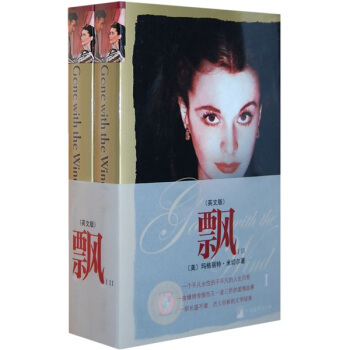

具体描述
编辑推荐
《飘(英文版)(套装全2册)》讲述一个平凡女性的不平凡的人生历程,一曲缠绵悱恻而又一波三折的爱情故事,一部长盛不衰,历久弥新的文学经典。Spring had come early that year, with warm quick rains and sudden frothing of pinkpeach blossoms and dogwood dappling with white stars the dark river swamp and far-off hills. Already the plowing was nearly finished, and the bloody glory of the sunsetcolored the fresh-cut furrows of red Georgia clay to even redder hues.
The moist hungry earth, waiting upturned for the cotton seeds, showed pinkish onthe sandy tops of furrows, vermilion and scarlet and maroon where shadows lay alongthe sides of the trenches. The whitewashed brick plantation house seemed an island setin a wild red sea, a sea of spiraling, curving, crescent billows petrified suddenly at themoment when the pink-tipped waves were breaking into surf. For here were no long,straight furrows, such as could be seen in the yellow clay fields of the flat middleGeorgia country or in the lush black earth of the coastal plantations.
Gone with the Wind is a novel by MargaretMitchell. Published in 1936, the book was animmediate success. Margaret Mitchell wasawarded a Pulitzer Prize for the novel in 1937,and Gone with the Wind was first adapted tofilm in 1939.
On June 30th in 1936, Margaret Mitchell'sGone with the Wind waspublished. It had beenextensively promoted, chosenas the July selection by theBook-of-the-Month Club, andso gushed about in pre-publication reviews——"GoneWith the Wind is very possiblythe greatest American novel,"said Publisher's Weekly-that it was certain to sell, andto provoke parody.
Mitchell was born in Atlanta, Georgia. Herchildhood, it seems, was spent in the laps ofCivil War veterans, and her maternal relatives,who lived through the war and the years tofollow. They told her everything about the warexcept that the Confederates had lost it. Shewas ten years old before making thisdiscovery.
She attended Smith College, but withdrewfollowing her final exams in 1919. Shereturned to Atlanta to take over the householdafter her mother's death earlier that year.Shortly afterward, she joined the staff of TheAtlanta Journal where she wrote a weeklycolumn for the newspaper's Sunday edition.
The book includes a vivid description of the fall of Atlanta in 1864 and the devastationof war (some of that aspect was missing from the 1939 film). The novel showedconsiderable historical research. According to her biography, Mitchell herself was tenyears old before she learned that the South had lost the war. Mitchell's sweeping narrativeof war and loss helped the book win the Pulitzer Prize on May 3, 1937.
Over the past years, the novel Gone with the Wind has also been analyzed for itssymbolism and mythological treatment of archetypes. Scarlett has been characterizedas a heroic figure struggling and attempting to twist life to suit her own wishes. Theland is considered a source of strength, as in the plantationTara, whose name is almost certainly drawn from the Hill ofTara in Ireland, a mysterious and poorly-understoodarcheological site that has traditionally been connected tothe temporal and/or spiritual authority of the ancient Irishkings.
内容简介
故事发生于美国南北战争前夕。生活在佐治亚州的少女斯佳丽从小受着南方保守的文化传统的熏陶,可她身上却日益显示出叛逆的个性,热情、奔放,具有种种鲜明的现代女性特征。随着战火的蔓延和环境的恶化,斯佳丽身上的这种叛逆的个性转而表现为艰苦创业、自强不息的精神,并在一系列的挫折中不断改造自我,挽回整个家族的颓势,从而成为时势造就的新女性形象。小说在描写个人命运与情感波澜的同时,还以开阔的场景和史诗的韵致成功地勾勒出南北战争的大背景以及南北双方在政治、经济、文化等各方面的差异,堪称美国历史转折时期的真实写照,因而,小说自诞生之日起即风靡全世界,成为英语文学中长盛不衰的爱情经典。
作者简介
Mitchell margaret (1900-1949)American writer.Margaret Mitchell is the popular author of "Gonewith the Wind" 1936), thetale of Scarlett O'Hara and her tragedies and triumphs through the Civil War and Reconstruction. Mitchell was awarded the ulitzer Prize and the National Book Award for her novel.目录
PART ONEChapter 1
Chapter 2
Chapter 3
Chapter 4
Chapter 5
Chapter 6
Chapter 7
PART TWO
Chapter 8
Chapter 9
Chapter 10
Chapter 11
Chapter 12
Chapter 13
Chapter 14
Chapter 15
Chapter 16
PART THREE
Chapter 17
Chapter 18
Chapter 19
Chapter 20
Chapter 21
Chapter 22
Chapter 23
Chapter 24
Chapter 25
Chapter 26
Chapter 27
Chapter 28
Chapter 29
Chapter 30
PART FOUR
Chapter 31
Chapter 32
Chapter 33
Chapter 34
Chapter 35
Chapter 36
Chapter 37
Chapter 38
Chapter 39
Chapter 40
Chapter 41
Chapter 42
Chapter 43
Chapter 44
Chapter 45
Chapter 46
Chapter 47
PART FIVE
Chapter 48
Chapter 49
Chapter 50
Chapter 51
Chapter 52
Chapter 53
Chapter 54
Chapter 55
Chapter 56
Chapter 57
Chapter 58
Chapter 59
Chapter 60
Chapter 61
Chapter 62
Chapter 63
精彩书摘
So, Ellen, no longer Robillard, turned her back onSavannah, never to see it again, and with a middle-agedhusband, Mammy, and twenty “house niggers” journeyedtoward Tara.The next year, their first child was born and they namedher Katie Scarlett. after Gerald‘s mother. Gerald wasdisappointed, for he had wanted a son, but he neverthelesswas pleased enough over his small black-haired daughter toserve rum to every slave at Tara and to get roaringly, happilydrunk himself.
If Ellen had ever regretted her sudden decision to marryhim, no one ever knew it, certainly not Gerald, who almostburst with pride whenever he looked at her. She had putSavannah and its memories behind her when she left thatgently mannered city by the sea, and, from the moment ofher arrival in the County, north Georgia was her home.
When she departed from her father’s house forever, shehad left a home whose lines were as beautiful and flowingas a woman‘s body, as a ship in full sail; a pale pink stuccohouse built in the French colonial style, set high from theground in a dainty manner, approached by swirling stairs,banistered with wrought iron as delicate as lace; a dim, richhouse, gracious but aloof.
She had left not only that graceful dwelling but also theentire civilization that was behind the building of it, and shefound herself in a world that was as strange and different asif she had crossed a continent.
Here in north Georgia was a rugged section held by ahardy people. High up on the plateau at the foot of the BlueRidge Mountains, she saw rolling red hills wherever shelooked. with huge outcroppings of the underlying graniteand gaunt pines towering somberly everywhere.
……
前言/序言
unll用户评价
从整体结构上来看,故事的布局堪称精妙的迷宫。每一个看似独立的小事件,都像是一个线索,最终汇聚到主干的命运线上,形成一个严密的逻辑闭环。作者非常善于设置“意料之外,情理之中”的情节转折,你以为你已经猜到了下一步的发展,但下一章的展开却总能带来新的维度和深度。最难能可贵的是,这种巧妙的结构设计,服务于主题的表达,而非单纯地炫技。每一次柳暗花明,都不是为了制造戏剧冲突而强行插入的,而是人物性格和环境压力共同作用下的必然结果。读完全套书后,我感觉自己像是走完了一个复杂的迷阵,虽然过程中充满了困惑和探索,但最终所有的疑惑都得到了圆满的解答,留下的是一种对作者叙事能力的深深敬佩。
评分语言风格的切换是这本书最让我惊艳的地方之一。在描绘宏大场景,比如自然风光或是集体活动时,作者的笔触变得如同史诗般恢弘而富有节奏感,句子结构复杂而大气,充满了古典文学的韵味。然而,一旦镜头聚焦到人物最私密的情感交流或是内心独白时,语言又瞬间变得极为精炼和克制,如同冰雪下的暗流,看似平静,实则蕴含着巨大的能量。这种叙事上的高低起伏处理得极其自然,丝毫没有生硬的割裂感,反而像音乐中的和弦变化,时而激昂,时而低回,精准地烘托了场景的氛围。我特别留意到几个关键对话场景,那些未说出口的话语,比直接的表白更具有穿透力,文字的留白艺术在这套书中得到了极好的体现。
评分阅读这套书的过程,仿佛进行了一次漫长而深刻的文化旅行。它不仅仅是关于某个特定时期或某个特定地域的故事,更像是一扇窗户,让我得以窥见那个时代人们生活方式、社会结构乃至审美情趣的方方面面。书中对服饰、礼仪、建筑乃至日常饮食的细致描摹,都显示出作者扎实的考据功底。这些细节的堆砌并没有让人感到冗余或拖沓,反而像一幅精心绘制的油画,为主要的人物冲突提供了坚实而可信的背景支撑。我能想象出那个年代的氛围,闻到空气中特有的气味,这使得整个故事的沉浸感倍增。它提供的不仅仅是故事,更是一份对逝去时光的温柔致敬。
评分这套书的装帧设计真是太有品味了,那种沉稳的米白色调,配上烫金的书名,拿在手里就能感受到一股宁静而深远的气息。我尤其喜欢封面那种做旧的质感,仿佛每一次翻阅都是在触摸历史的纹理。内页的纸张选择也非常考究,厚实且柔和,即便是长时间阅读也不会让人感到眼睛疲劳,这对于我这种习惯于深夜伴着台灯沉浸在文字中的人来说,简直是福音。装订工艺也无可挑剔,书脊的处理非常牢固,可以完全平摊开来,无论是做笔记还是单纯地欣赏排版,都非常舒适。每一页的字距和行距都把握得恰到好处,给予了文字足够的呼吸空间,这让原本可能略显沉重的叙事,也变得轻盈起来,引导着读者心无旁骛地投入到故事的情境之中。对于一个注重阅读体验的读者来说,拥有一套如此精致的书籍,本身就是一种享受,它让“阅读”这件事本身,上升成了一种仪式感。
评分故事的开篇就展现出一种令人窒息的张力,作者对于人物内心活动的刻画简直达到了出神入化的地步。特别是对主角在面对巨大变故时那种细微的情绪波动——那种外表故作镇定,内心却早已波涛汹涌的矛盾状态,被描绘得淋漓尽致。我几乎能感受到她每一次深呼吸背后的挣扎与克制。这种心理描写并非空泛的理论堆砌,而是通过一系列极具画面感的场景和人物的独白自然流淌出来,让读者完全代入到角色的处境中去思考:如果是我,我会如何选择?这种强烈的共情能力,使得阅读过程充满了思辨的乐趣,让人忍不住停下来,合上书本,在自己的世界里回味片刻,直到被情节再次拽入。它探讨的那些关于选择、责任与命运的主题,即便放在今日来看,依然尖锐而富有洞察力。
评分很喜欢,书的纸张质量也不错
评分纸质不错,排版也很合理,不会觉得拥挤,读得时候不会觉得难受,邮寄的速度也很快,偶尔有一些英文印刷错误,不过这在任何一本书都是难免的
评分还可以,价格有点烧毁,再便宜一点就好了
评分一项费时的大工程,买来看了有三十来页了,考虑学习的空间还很大,呵呵
评分很喜欢飘,喜欢媚兰,她的温柔善良与美好坚强,喜欢白瑞德,他的痴情与透彻。。。。。。
评分商品很好,质量不错,快递也到位。
评分书很不错哦,厚实,适合收藏
评分和中文版对比后发现英文版好很多,中文版肯定是盗版
评分送给朋友的,正版,超喜欢
相关图书
本站所有内容均为互联网搜索引擎提供的公开搜索信息,本站不存储任何数据与内容,任何内容与数据均与本站无关,如有需要请联系相关搜索引擎包括但不限于百度,google,bing,sogou 等
© 2025 book.coffeedeals.club All Rights Reserved. 静流书站 版权所有

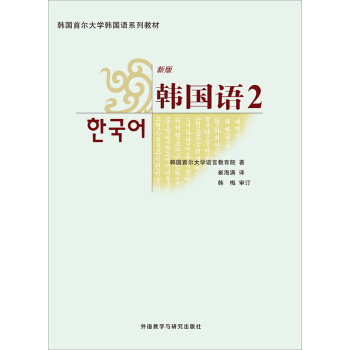

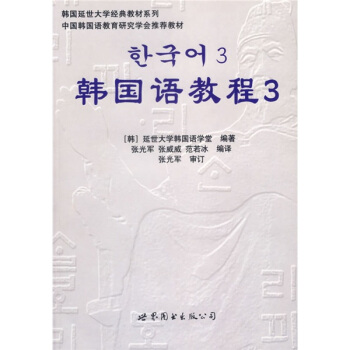
![大中华文库:吕氏春秋(汉英对照)(套装共3册) [The Spring and Autumn of Lu Buwei] pdf epub mobi 电子书 下载](https://pic.windowsfront.com/10673812/13d66b44-a167-4cd9-9a70-eb130558c666.jpg)
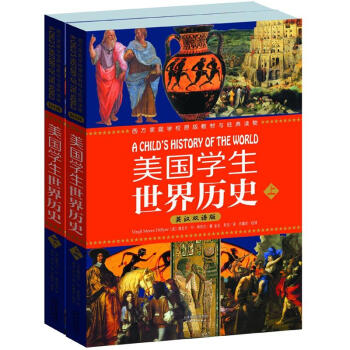
![新编儿童英语入门(第1册)(DVD光盘) [3-6岁] pdf epub mobi 电子书 下载](https://pic.windowsfront.com/10074371/c779f764-8026-485b-90cb-e5b5a21a4b72.jpg)




![语感启蒙:经典英文儿歌图画书第二辑(套装共7册) [3-8岁] pdf epub mobi 电子书 下载](https://pic.windowsfront.com/11538406/54110698N9d58ee3c.jpg)
![大家的日语:中级1(学习辅导用书) [みんなの日本語] pdf epub mobi 电子书 下载](https://pic.windowsfront.com/10214374/48da0f7c-4c52-47d8-9479-2d5b62b89271.jpg)
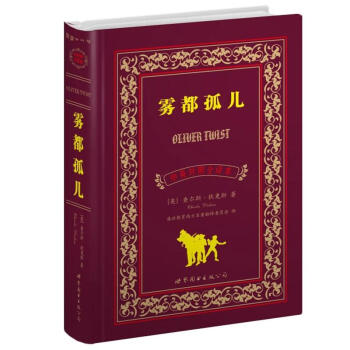
![新概念英语青少版学生用书(3A)(附MP3+DVD光盘2张) [Junior New Concept English] pdf epub mobi 电子书 下载](https://pic.windowsfront.com/11222257/rBEhU1MhXCsIAAAAAAdcZxMNLw0AAKBqANTL5gAB1x_204.jpg)





